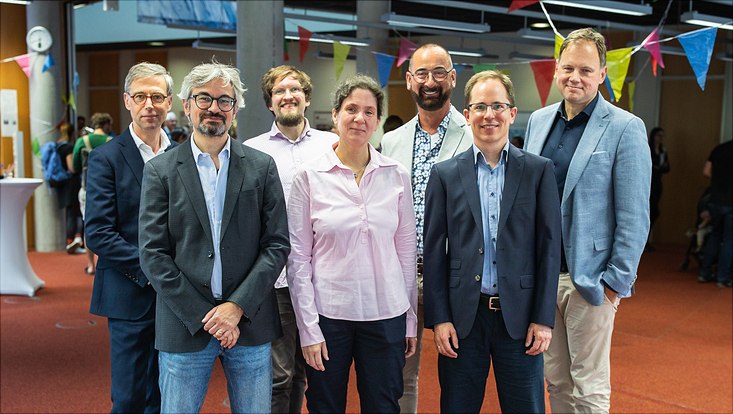Winner of the 2024 KlarText awardVolcanoes on the Seabed
11 October 2024, by Dr. Jonas Preine

Photo: Annette Mueck
AS most volcanoes are located underwater in the ocean it is difficult to study them. How can we still examine volcano geology and history and assess their hazards? A journey to Santorini
White houses, blue roofs, and a breathtaking view of the Aegean: Santorini island, north of Crete is a dream destination for many travelers. The archipelago attracts about 2 million tourists every year. Only few people know, however, that one of the biggest natural disasters recorded in history took place right there.
About 3,600 years ago, in the late Bronze Age, a volcanic island erupted in the local seabed. Gigantic amounts of ash darkened the Greek sky, scorching avalanches of ash and gas poured over the island and into the ocean. Tsunamis flooded the Aegean coast reaching Knossos—the center of Minoan civilization on Crete, which, thus weakened, it was wiped out only a few decades later.
Marine volcanoes around the world hardly explored
The impact of a comparable volcanic eruption in today’s populous Mediterranean is hard to imagine. How large is the actual risk on and around Santorini? Are there possibly more underwater volcanoes? These are questions that we are also addressing in the following.
Despite previous devastating eruptions, the hazards of marine volcanoes are little-studied across the globe. The sudden eruption of the Hunga Tonga-Hunga Ha’apai pacific volcano in 2022, that sent several shockwaves around the Earth, proved that humankind is not yet prepared for eruption of this magnitude. Accurate predictions of volcanic eruptions will remain unlikely in the distant future. It is thus essential that we broaden our understanding of the history of submarine volcanoes in order to better assess volcanic triggers and hazards. Given their location this is a difficult task.
Reconstructing the evolution of the Santorini volcanic field
In 2019, we boarded the research ship Poseidon together with colleagues from the GEOMAR Helmholtz Centre for Ocean Research Kiel and the University of Athens in Greece. We were aiming to conduct measurements along the Santorini volcanic field. In principle, there are similarities between seismics and medical ultrasound imaging. At regular intervals, we sent sound impulses underground and measured the travel times of reflections at the interface of the various layers of the Earth. In this way, we created a structural image of the underground and discovered structures ranging in size from several dozens to hundreds of meters. To some extent, this enabled us to look “into” volcanoes and explore their structure.
After a month of continual measurements we returned with large data sets. Based on this, we created cross-sectional images of the seabed and the underlying geological layers, also including data from previous University expeditions. Collaborating with an international team we could reconstruct the eventful evolution of Santorini’s volcanic field and made several surprise discoveries along the way.
Find a full version of Dr. Jona’s Preines award-winning geosciences contribution on the KlarText webpages and directly in the KlarText magazine as a flickable PDF.
About
Dr. Jonas Preine earned his doctorate with Prof. Dr. Christian Hübscher in the Department of Earth System Sciences at the University of Hamburg. He is a research associate at the Center for Earth System Research and Sustainability. Jonas Preine received numerous previous distinctions, among others, the Bert Rendel-Prize from the German Research Foundation and the Günter Bock Preis from the Deutsche Geophysikalische Gesellschaft e. V.
KlarText award
The annual KlarText award from the Klaus Tschira Stiftung is worth €7,500 and granted in 7 categories. Dr. Anna Katharina Miesner, who is also a geosciences researcher at the University of Hamburg, was among the winners of the 2023 round.


